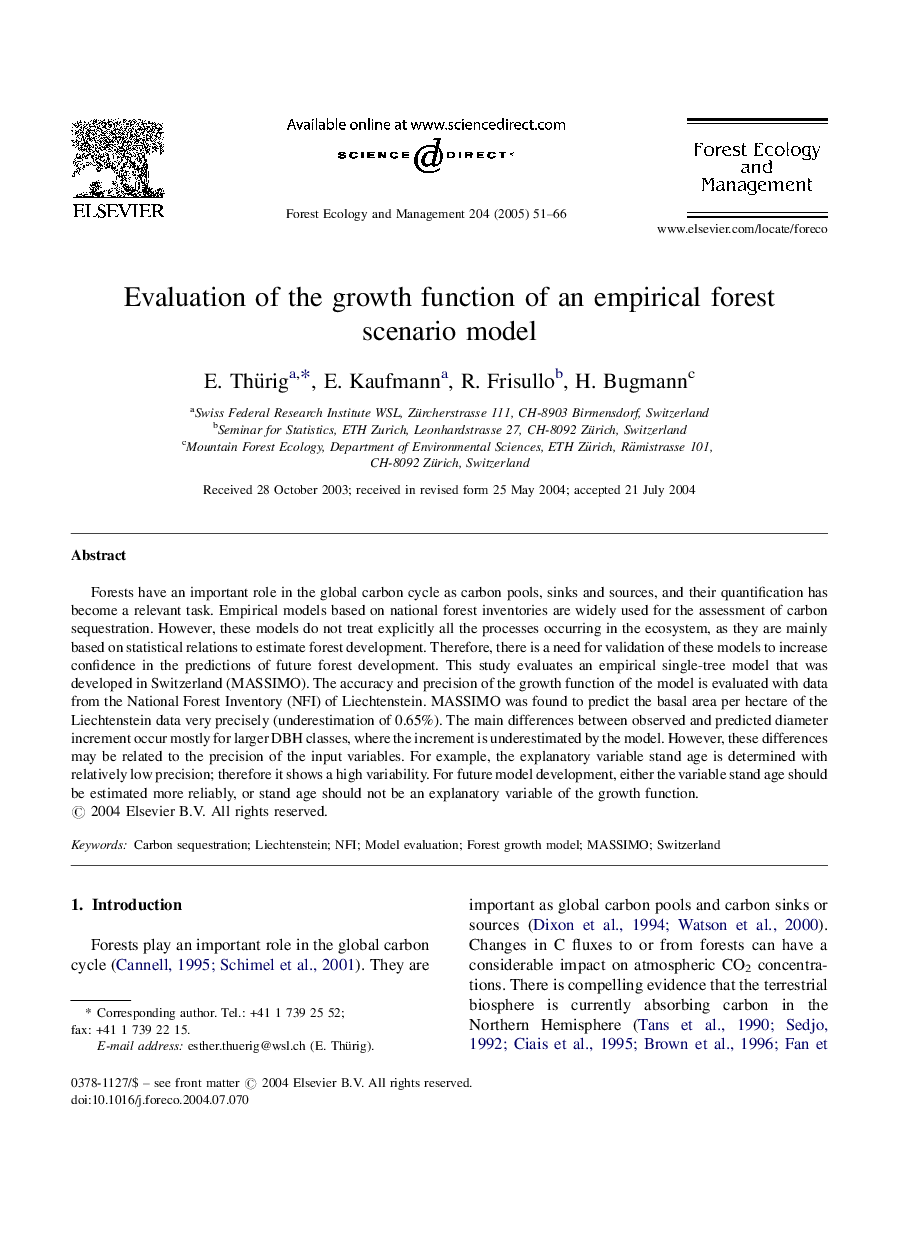| Article ID | Journal | Published Year | Pages | File Type |
|---|---|---|---|---|
| 10250666 | Forest Ecology and Management | 2005 | 16 Pages |
Abstract
Forests have an important role in the global carbon cycle as carbon pools, sinks and sources, and their quantification has become a relevant task. Empirical models based on national forest inventories are widely used for the assessment of carbon sequestration. However, these models do not treat explicitly all the processes occurring in the ecosystem, as they are mainly based on statistical relations to estimate forest development. Therefore, there is a need for validation of these models to increase confidence in the predictions of future forest development. This study evaluates an empirical single-tree model that was developed in Switzerland (MASSIMO). The accuracy and precision of the growth function of the model is evaluated with data from the National Forest Inventory (NFI) of Liechtenstein. MASSIMO was found to predict the basal area per hectare of the Liechtenstein data very precisely (underestimation of 0.65%). The main differences between observed and predicted diameter increment occur mostly for larger DBH classes, where the increment is underestimated by the model. However, these differences may be related to the precision of the input variables. For example, the explanatory variable stand age is determined with relatively low precision; therefore it shows a high variability. For future model development, either the variable stand age should be estimated more reliably, or stand age should not be an explanatory variable of the growth function.
Related Topics
Life Sciences
Agricultural and Biological Sciences
Ecology, Evolution, Behavior and Systematics
Authors
E. Thürig, E. Kaufmann, R. Frisullo, H. Bugmannc,
